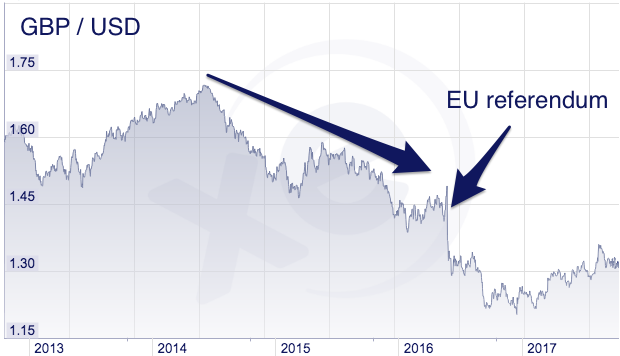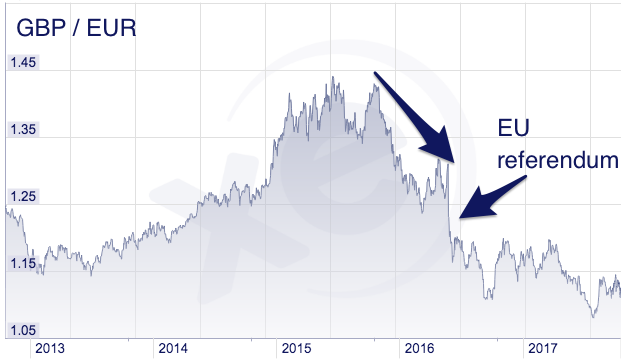A slide in the value of sterling against the dollar and the euro over the past 18 months has brought into sharp focus how important exchange rates are to investors. Far from being a secondary concern, we’ve seen a period when succumbing to ‘home bias’ and ignoring currency exposure, can damage investment returns.
The UK’s decision to leave the European Union triggered a devaluation of the pound against major currencies in the summer of 2016. But a sustained weakening of sterling goes back way before that. So it’s now much harder to justify the argument that exchange rates are hard to predict and less important than underlying share prices.
What we’ve seen has highlighted just how important foreign market diversification can be. Faced with a weaker pound (and the possibility of it falling further in the coming months) investors with all-sterling portfolios are at risk of needless underperformance. And those who are comfortable with their investment performance, may actually find that they aren’t doing as well as they think.
Exchange rate moves can ruin your investments
Since the EU referendum, sterling has slipped by 12 percent against the dollar and 15 percent against the euro. But the weakness actually started long before that. Over 24 months, the pound is down by 13.6 percent against the dollar and a whacking 21.9 percent against the euro. In fact, the pound has been falling against the dollar since the middle of 2014.

Source: xe.com

Source: xe.com
For most investors, this has generally led to questions about how different companies might be affected. But a more pertinent question should focus on how to avoid losing out to this negative exchange rate trend. Some companies can’t avoid the impact of varying exchange rates, but investors can - by diversifying their exposure across foreign markets.
How foreign exposure can work in your favour
The immediate impact of the falling value of sterling - ignoring for a moment how equity prices have moved over the past two years - is that US and European assets held by UK investors are now worth considerably more. Without doing anything, the currency effect has had a huge impact.
Let’s take an example. Say you bought 10 shares in Amazon at $647 each back in November 2015. At the time, your $6,470 investment would equate…







